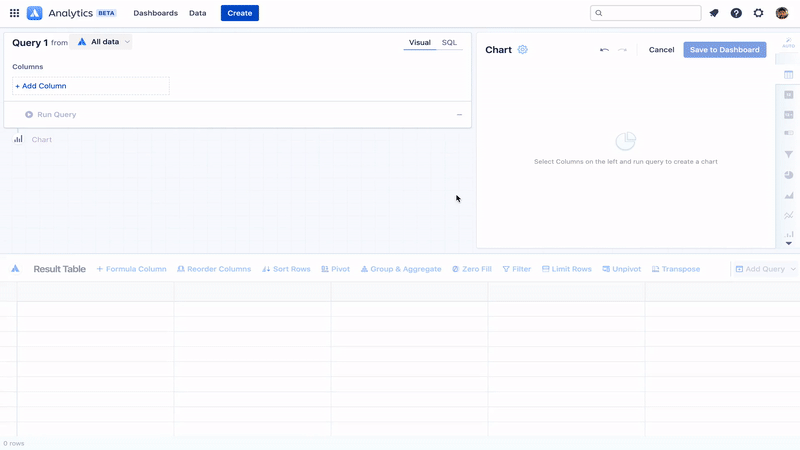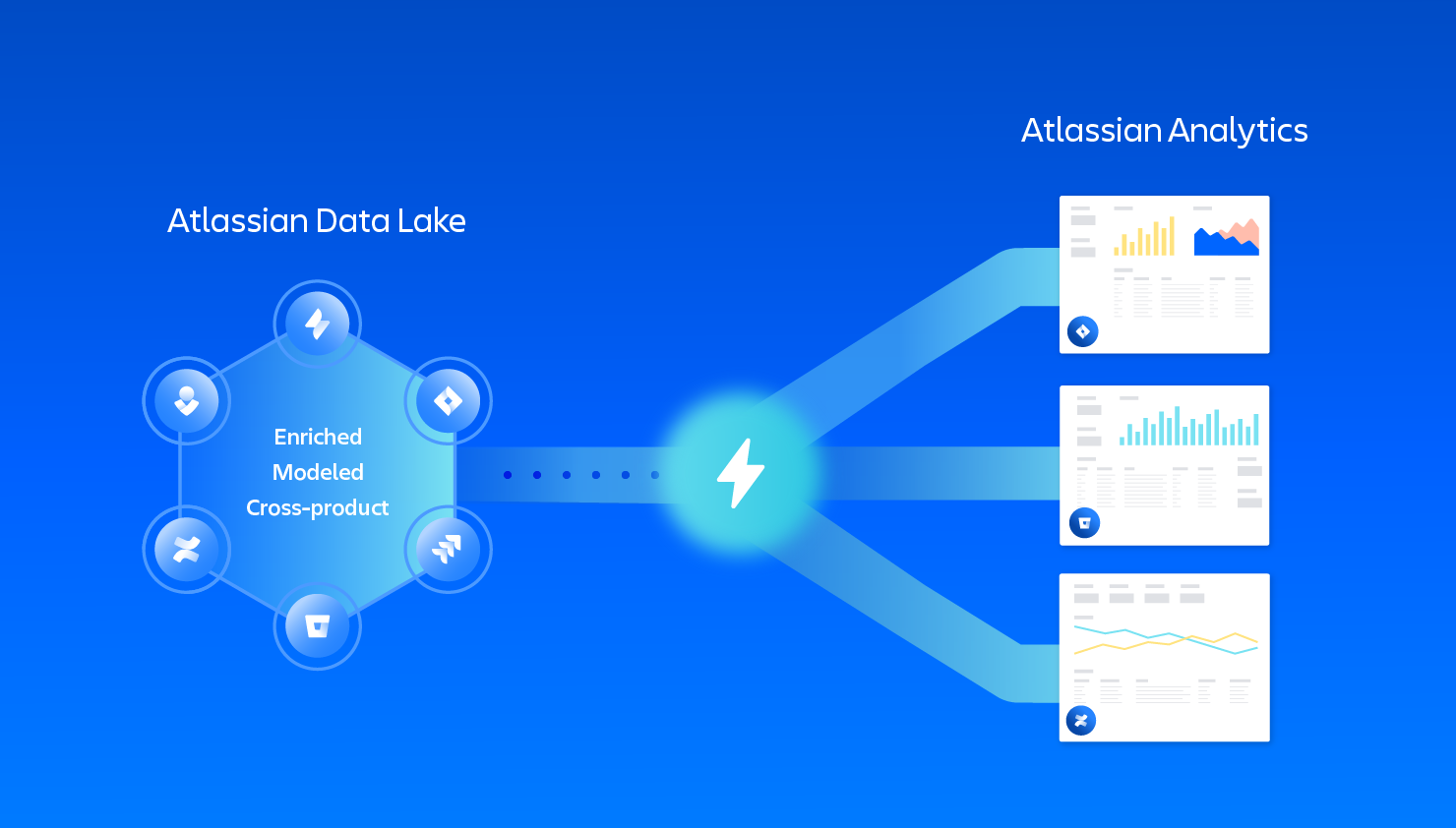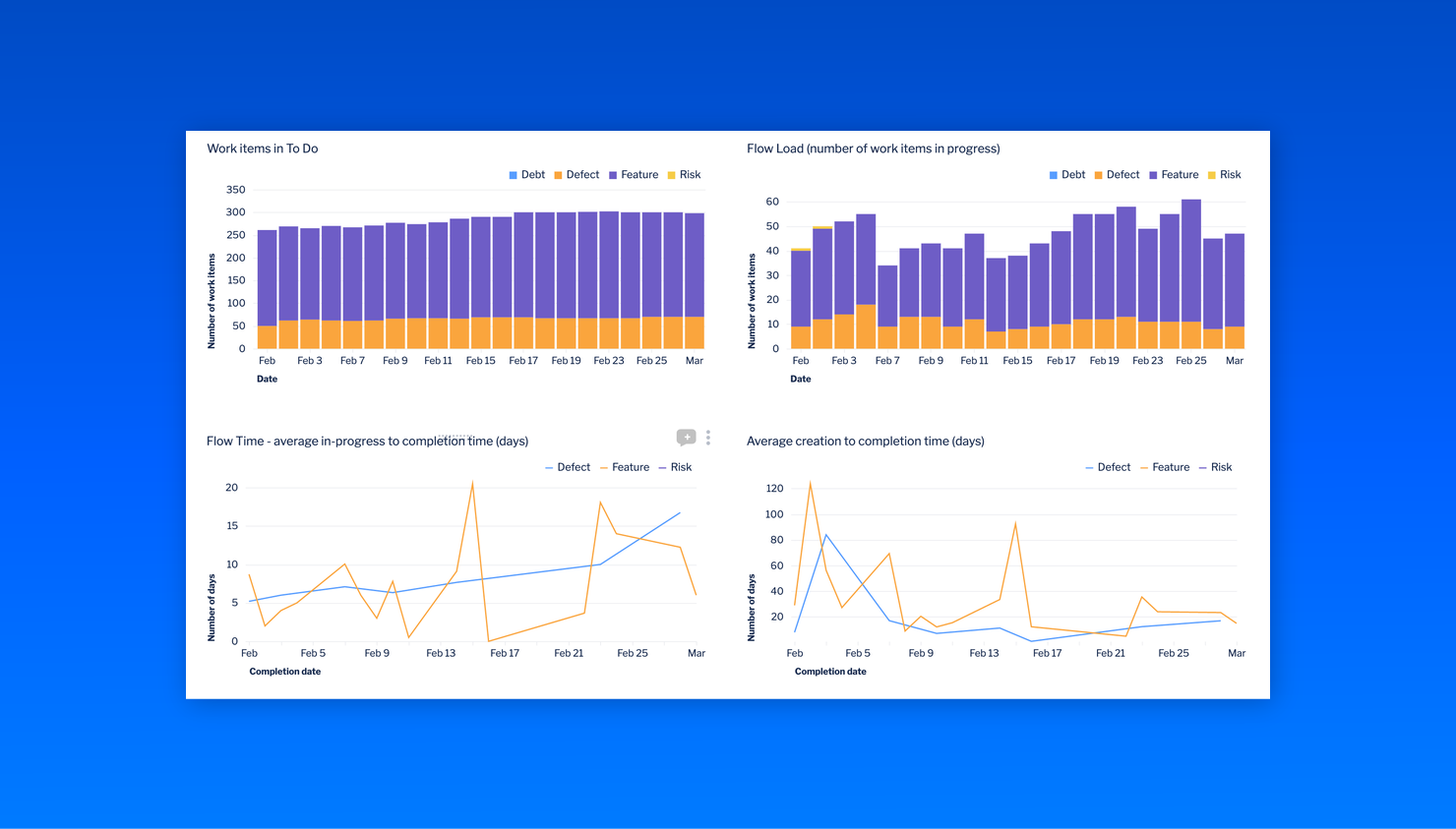Atlassian today announced the launch of its new data lake and Atlassian Analytics, a front end for its data lake that will allow its customers to easily query all of the data they have stored across the various Atlassian products they use. The new Analytics service is based on its acquisition of data analysis and visualization service Chartio in early 2021.
Over the course of the last few years, Atlassian heavily invested into its core technology platform, which is now shared across its cloud products. Part of this is a common data store that connects all of these products. Now, with the launch of the Atlassian Data Lake and Analytics, users will be able to build their own custom reports and dashboards, either in Analytics or the business intelligence tool of their choice.
Atlassian Analytics offers both a no-code interface and the ability to query the data lake using standard SQL queries. It’ll offer non-technical users the ability to easily visualize their data with pre-built templates for common use cases but also offer the flexibility to customize them as needed. As of now, it only features support for data from Jira Software and Jira Service Management, but the plan is to extend this to other services over time.
“Fundamentally, our history has been in on-premise products for the first 10 years of our life. A lot of our customers who are used to using server and data center products used to just hit the database directly and write SQL queries and get their data out. Moving into the cloud world, they didn’t have a symmetric capability until we introduced Atlassian Data Lake. With the data lake, now they’re able to use APIs and just write SQL queries to get data from across different Atlassian products,” Atlassian COO Anu Bharadwaj told me.
She noted that a lot of customers may track their work in Jira, with GitHub or Bitbucket pull requests associated with them — and then there are tickets about an incident that may be related to some recent work tracked in Jira Service Management. “With the data lake, it’s really step zero for us to be able to say: For this piece of work in Jira Software and this piece of work in Jira Service Management, we are at last able to give you one common place that you can query it from,” Bharadwaj explained.
Because you could connect it to outside data sources as well, Atlassian’s customers could use it as a general-purpose business intelligence tool as well, but that’s not the core purpose here. “When we built the data lake and Atlassian Analytics, we started with the fundamental principle that we want this to be extensible — we want this to be able to use third-party data,” Bharadwaj noted. This may mean combining revenue data from a third-party data warehouse and engineering data from Jira Software, for example. But the team isn’t trying to build a competitor for Tableau and the team wants this to be an open platform. Indeed, it’ll soon offer the ability to access data from the Atlassian Data Lake in other BI tools like Tableau or Microsoft’s Power BI for those customers who have already invested into these tools.
These new tools are now available as part of an early access program for current customers of Atlassian’s Cloud Enterprise edition.



